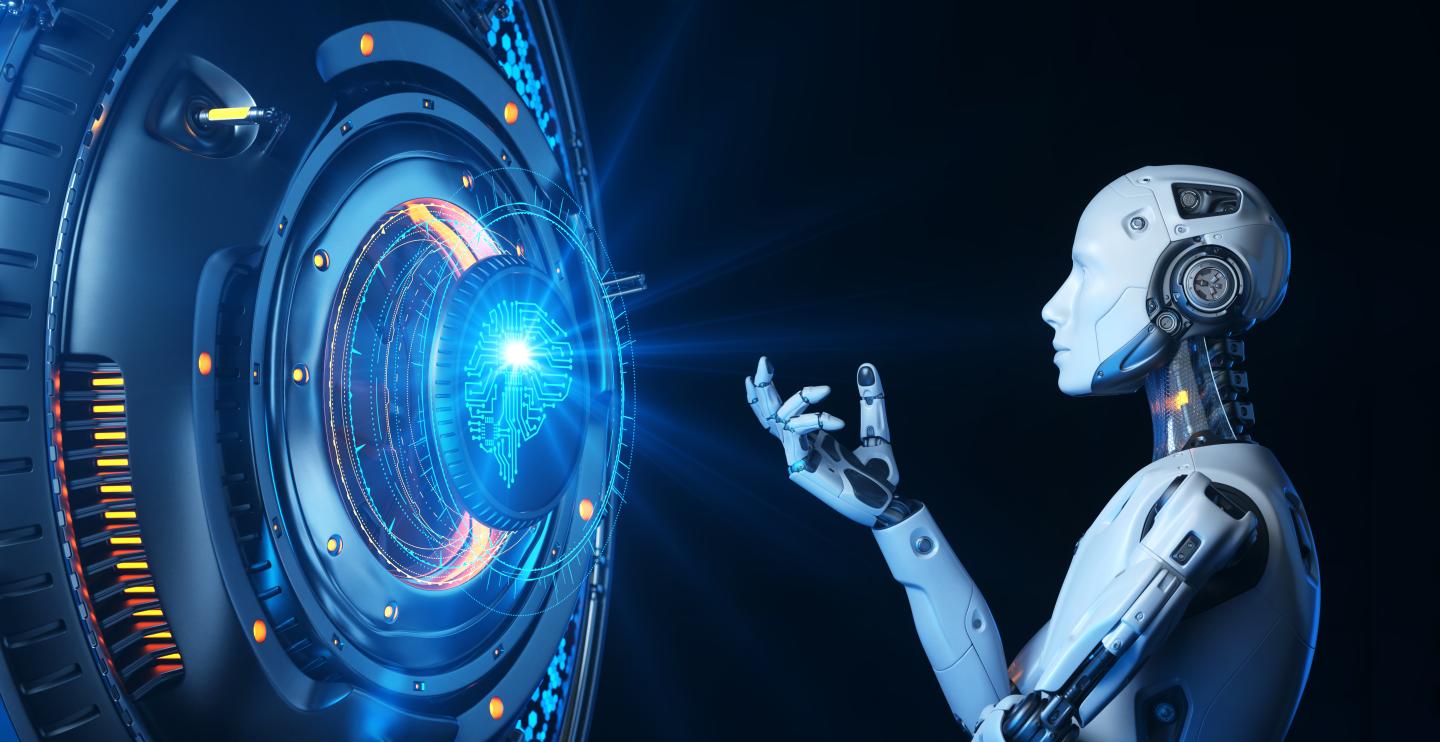What is artificial intelligence? What would be its future?
Computers are already widely used in data collection, processing, and storage, tasks that are generally time-consuming and which do not require much flexibility.
What is artificial intelligence?
Artificial intelligence (AI) is a growing area of interest among researchers and developers. There are different opinions on the exact definition of AI, but it generally refers to machines that mimic human cognition or behavior. Experts expect various aspects of our lives to be affected by the growth of AI technology in many different ways.
The term “artificial intelligence†was first coined by John McCarthy in 1956 during the Dartmouth Conference, which established an annual academic event that still today gathers experts in AI.
The concept of creating machines capable of performing tasks typically associated with human minds has been around since antiquity. But it was only after World War II and the invention of electronic computers that research on how to program the computer to process information as humans do began in earnest.
In 1956, McCarthy coined the term “artificial intelligence†during the Dartmouth Conference, which established an annual academic event that still today gathers experts in AI. Although no one can fully predict how far this technology will go and what kind of consequences it might have on society, some thinkers like Ray Kurzweil, author of “The Singularity is Nearâ€, are concerned that artificial intelligence might surpass human capacities and lead to the end of the human race as we know it.
This transition could be compared to that between humans living in caves and humans using tools – something quite obvious for us today but which was not even conceived of until the idea was presented by Louis Leakey, an archeologist who discovered several pre-human remains in Africa.
Many advances that we now take for granted were at first regarded as impossible: airplanes, space flights, and even the Internet were all seen as improbable or unrealizable ideas before becoming ubiquitous technologies. This has led some specialists to compare the evolution of AI with that of humans, who were initially weak but have been gradually getting stronger.
In this context, it is possible that machines originally designed for specific tasks might eventually evolve to become autonomous systems capable of making decisions independently from human beings, in a process similar to what happened when our ancestors started walking on two legs instead of four.
To be clear, this does not mean that humans would become obsolete and be replaced by computers: rather, artificial intelligence technology could allow human beings to focus on tasks they excel at while developing other capabilities for machines that can take care of repetitive or easily determined tasks that currently require a lot of time and effort.
Computers are already widely used in data collection, processing, and storage, tasks that are generally time-consuming and which do not require much flexibility. In the future, they could be applied to more complex operations such as those currently performed by robots.
Gianmarco Veruggio, an entrepreneur who runs a company that develops robots for various applications such as entertainment and education, says that artificial intelligence could be applied to areas requiring more creativity.
“In the last years, we have seen a new kind of robotics,†he explains. “Ten years ago there were only industrial robots, which you would program for specific actions through coding language. Now we also have service robots programmed with an interface that puts together elements taken from the different programming languages. There are, for instance, robots that can interact with childrenâ€.
One example of this kind of technology is Pepper, a humanoid robot developed by SoftBank Robotics Corp., which was inaugurated in Italy during an event at Verona’s Fiera last June. The initiative attracted thousands of visitors who were able to meet it and play with it. Gianmarco says that “Pepper can recognize faces and its hands have sensors that allow you to touch it without hurting it.†This means that artificial intelligence could potentially be applied to sensitive areas such as healthcare or nursing care for the elderly, where social interactions are needed but competence in mathematics or mechanics is not necessary.
“We should definitely expect changes in the years to come,†he adds. “In just a few months, it’s been possible to see how many people have been interested in Pepper and similar technologiesâ€.
It remains to be seen whether this kind of technology will become widespread or if it is mainly an article for luxury goods markets. There have also been complaints from users who have claimed that the robot has sometimes reacted unpredictably. However, Gianmarco thinks that these problems can be resolved sooner or later: “I think we should not compare Pepper with a human being but with a pet. The reactions depend on what you teach him so if you want him to respond in a certain way, you teach him the rules beforehand.â€
What is the future of Artificial Intelligence?
Artificial intelligence has been an area of interest for many people, even before it came into existence. The idea behind artificial intelligence is to build machines that can think like human beings and even better than them in some cases. These days, the term ‘machine learning is mostly used to describe the intelligent behavior of computers (and other smart devices). Machine learning relies on algorithms that keep on improving themselves with time – making it possible for us to ask more complex questions without actually programming the answers beforehand. As far as history goes, Artificial Intelligence was coined by John McCarthy way back in 1956 at Dartmouth College during a summer workshop. This led to the formation of MIT’s AI Lab – one of the world’s first hubs for machine learning and other types of AI research. Many people believe that we’d never have iPhones or Facebook if we’d never had artificial intelligence.
Artificial intelligence is divided into different types:
This is a relatively new concept in AI where machines learn from raw data (mostly unstructured) rather than hand-coded rules. It’s used in many applications such as social network filtering, predictive analytics, etc. Big Data Analysis falls under the topic of Machine Learning as well.
Machine learning can be put into two categories: Supervised Learning and Unsupervised Learning. In supervised learning, you need to provide the computer with training examples (Okay/Not Okay) and let it figure out how to make sense of things on its own – this is where the concept of ‘machine learning’ comes into play. In unsupervised learning, we need to provide computers with a large amount of data and let them find hidden patterns and structures within it on their own.
Machine Learning is used by both Google Search and Netflix for personalizing search results and customizing video recommendations respectively. These days, there are several open-source machine-learning projects available as well (apart from the ones provided by tech companies) which anyone can use for free – such as SystemML, WEKA, Orange, etc. The next wave in computing will be driven by systems that learn from the data they encounter – reflecting how humans do things (to some extent).
There’s a lot more to Artificial Intelligence than these three types. For example, Natural Language Processing – a field that seeks to make computers understand human languages and reply back intelligently. Artificial Neural Networks are another popular form of AI where computers are programmed to do ‘human-like things such as identify images, analyze handwriting, etc.
According to a recent report by International Data Corporation (IDC), the worldwide artificial intelligence market is expected to grow from $8B in 2016 to more than $47B by 2020 at a Compound Annual Growth Rate (CAGR) of almost 54%. Many tech companies have been using machine learning for years now – Google Translate would be one very good example. Self-driving cars also use this technology for navigation purposes – Tesla’s cars come pre-installed with the company’s own deep neural network called ‘ Tesla Vision’.
The next step for researchers is to provide machines with an ‘artificial brain’ – something that can replicate human processes inside computers. After all, the whole idea behind artificial intelligence is to help us build computers that can think as humans do. As of now, it looks like we’re heading in the right direction.
- General (2)
- How To (2)
- Residential (2)
- Tools and Equipment (2)
Recent News
- Flutterwave loses ₦11 billion in security breach 15-02-2023
- How to Protect Yourself from Cyber Attacks 15-02-2023
- Phishing scams are becoming more prevalent in Africa 15-02-2023
- Why some of Nigeria's worst cyber attacks are not reported 15-02-2023
- What is artificial intelligence? What would be its future? 15-02-2023
- Cybersecurity and Cybercrime Trends in Africa 15-02-2023
- Cyber Threats That Small Businesses Are Facing Right Now 15-02-2023
- Global Trends In Ethical Hacking 2022 15-02-2023
- 4 Things You Should Do To Be Secure From Cyber Threats 15-02-2023


